Rising above the Yemen conflict

In April 2019, I went back to Yemen, my homeland, to witness first-hand how the ongoing war is affecting local communities. Upon reaching my first destination, the city of Marib, I was taken aback by the scale of change. The marginalised tribal area I once knew has become an epicentre in North Yemen.
Unlike its neighbours in the north, Marib has been able to fend off constant Houthi rebel attacks, making it a refuge for thousands of internally displaced Yemenis. In just four years, its population has increased fifty-fold, transforming Marib into a large, bustling city run by a Saudi-backed government, tribal leaders, political elites and the military. It hangs on as a stable exception in Yemen. But from what I saw and heard, the relative peace is fragile.
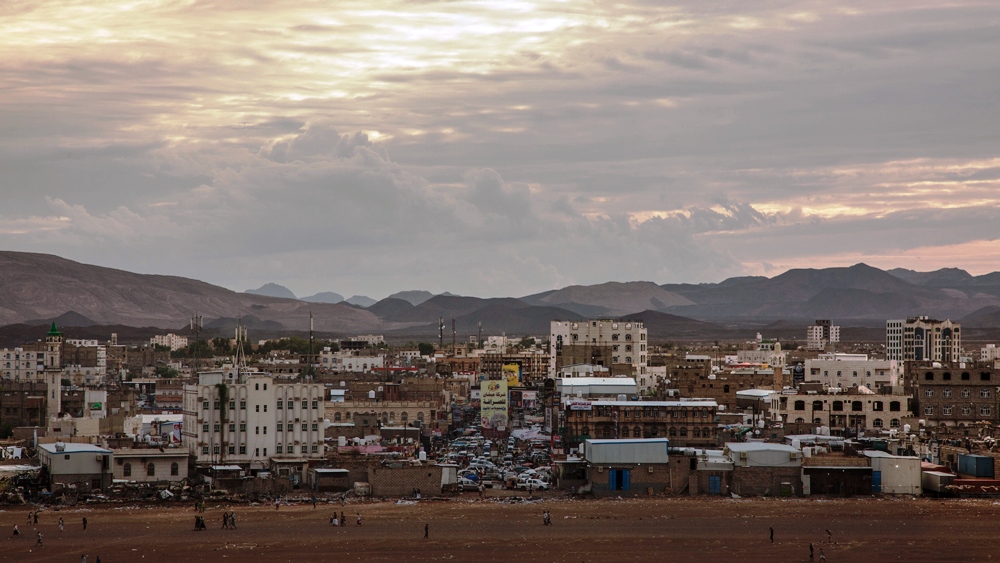
Protected from the worst ravages of war
Despite being outnumbered and less equipped, the tribal fighters were able to resist the Houthis for several weeks and prevented their advancement on multiple fronts. This was largely due to the tribal leaders’ defence strategy that contained the fight in the mountains instead of turning the populated areas into battlefields.
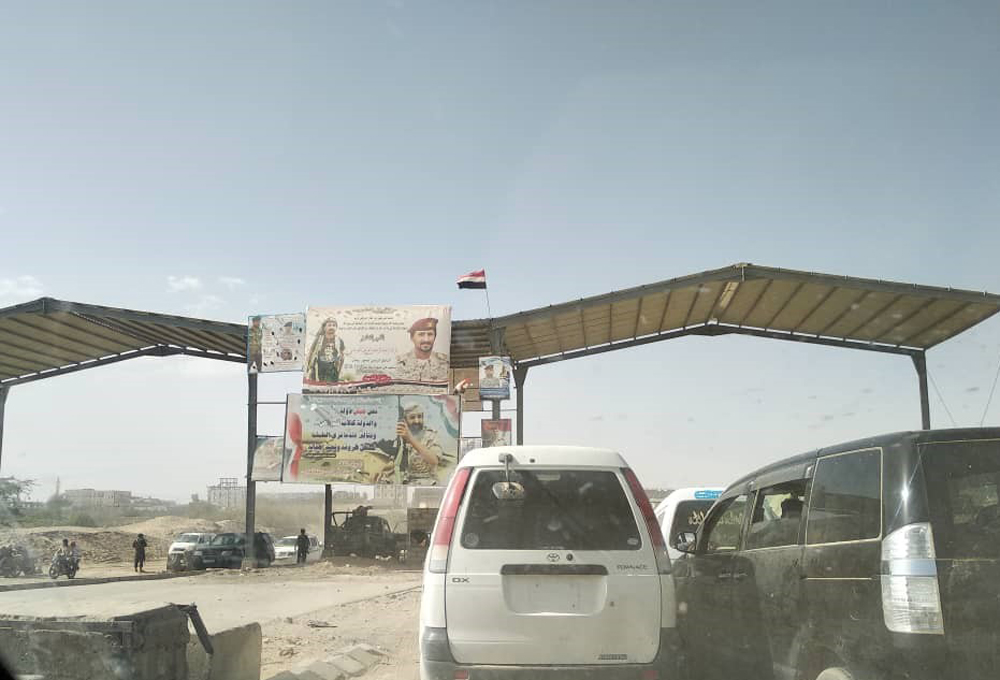
In March 2015, the Saudi-led coalition began providing military and security support to Marib, solidifying the area as a resistance hub and helping to take back many nearby districts from the Houthis’ grip. Given ongoing skirmishes, the Saudis continue to provide the governorate’s authorities with weapons, training, funding and assistance for the security sector.
Meanwhile, people who oppose the Houthis or have been harmed by Houthi policies continue to flock to the area. They speak of arbitrary arrests against supporters of President Abd Rabbu Mansour Hadi or the Islah Party and extra taxes on merchants. For them, Marib offers a stable environment, thanks to its relatively unified local governance.A refuge for many
As a result, the city’s population has grown from around 40,000 to more than 1.5 million, according to local authorities. While travelling around Marib, I was struck by how diverse its population has become. People from all parts of Yemen have settled in Marib in search of a better life – drawn by its reputation as the safest governorate among non-Houthi-controlled areas and by comparatively more economic opportunities.
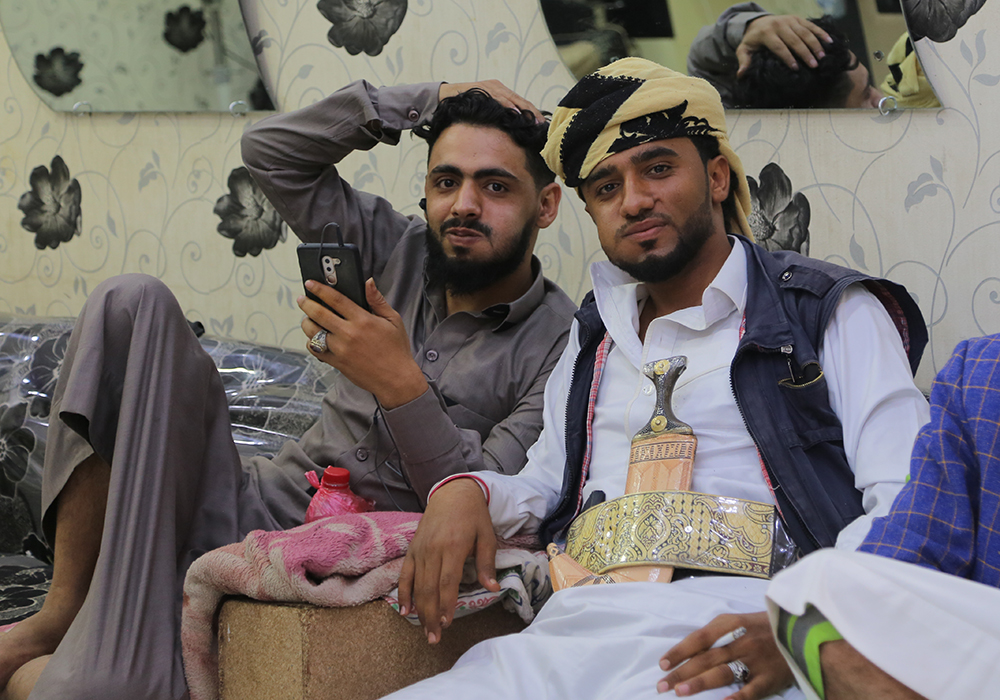
Before 2015, Marib’s residents were mostly divided into tribes that worked in agricultural sectors spread out across the governorate. Known for its oil wealth and feats of agricultural engineering, such as the Marib Dam, the area has long held strategic importance in Yemen. Since its oil refinery was built in 1986 by Safer, it has provided a substantial proportion of the country’s domestic oil needs. The rapid increase in population, however, has forced the city to diversify its economy, creating a burgeoning network of businesses.
A city under significant pressure
Nevertheless, Marib is still facing serious challenges. Missiles periodically hit the surrounding area, and military confrontations continue not far from the city centre (for example, in the districts of Sirwah and Qaniah). What’s more, it is clear that Marib does not have the infrastructure and public services to support such a large influx of people.
The daily construction of new buildings has led to massive urban expansion. Entire neighbourhoods have popped up in different parts of the city to accommodate new arrivals. Still, the demand for housing far outweighs the supply. The average rental cost has risen by more than 500 percent over the last four years. Some people I interviewed mentioned that lagging economic conditions have forced them to share simple houses and apartments with as many as five other families.
Adding to the pressure, Marib has become a transit hub for African migrants who cross the Gulf of Aden from Somalia. While waiting to be smuggled into wealthier countries, such as Saudi Arabia, the migrants try to find any daily work they can to meet their basic needs. When night comes, they sleep either on the streets or at mosques. Tribal traditions oblige residents to offer food and shelter to strangers but, surprisingly, none of the Yemenis I spoke to sounded resentful. Still, there is little integration or interaction between the two communities. Given the language barrier, migrants mainly communicate using hand gestures, often pointing to their mouths to indicate hunger.
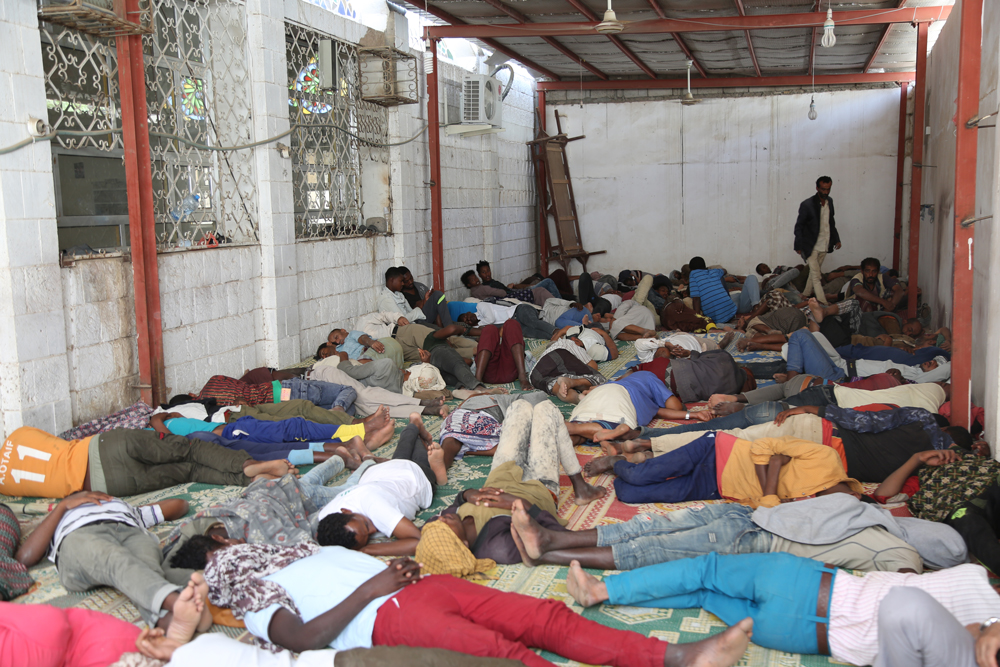
Being close to the only open border crossing with Saudi Arabia, the city has also become a rest stop for other travellers. Consequently, Marib stays alive late into the night. Some shops and restaurants keep long hours to serve the constant flow of customers. According to one restaurant owner, before 2015, most restaurants used to only serve lunch, but now they are open day and night.
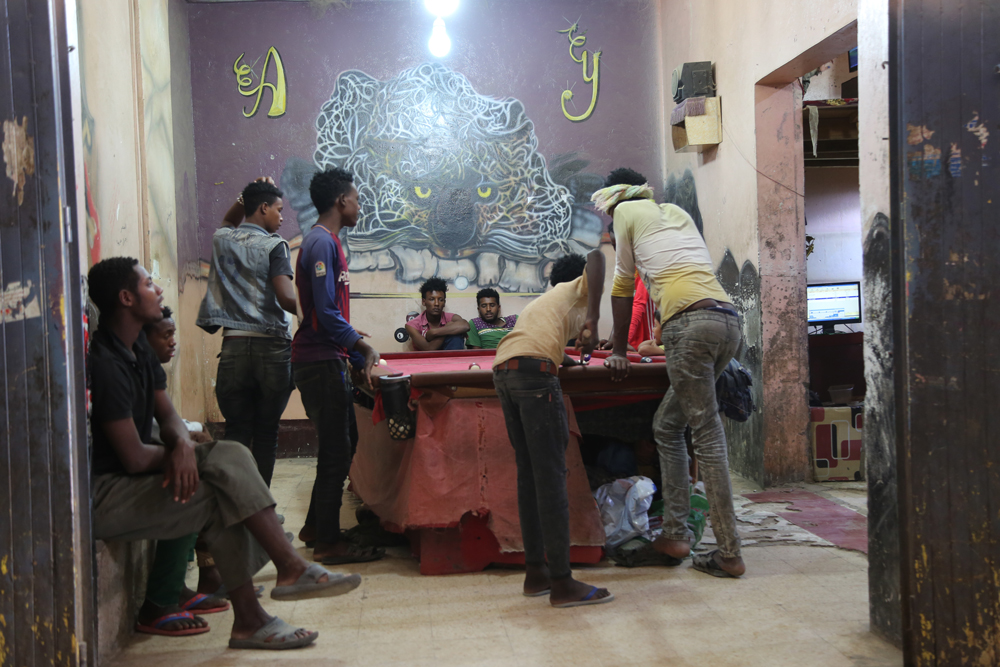
Entrepreneurship is thriving, but business feels fragile
Thousands of small and medium-sized businesses have opened in Marib since 2015, but most are operating in shoddy buildings. Businessmen do not want to waste time on construction work or spend a lot of money on fixed assets. They still feel unsafe, citing the possibility of inbound missiles.Most businesses provide basic goods and services (like grocery stores, restaurants, khat markets, fuel stations, car mechanics, or roadhouses). One businessman I interviewed recently opened a big supermarket in a cheap, metallic building. He said most merchants try to invest in variable assets, as they are unsure about the security conditions. Even at a high-tech business housed in Marib’s modern market area, there are reminders of the security situation. Although it is a tribal custom for men to carry weapons at all times, including while shopping, the practice has become even more common since the conflict began.
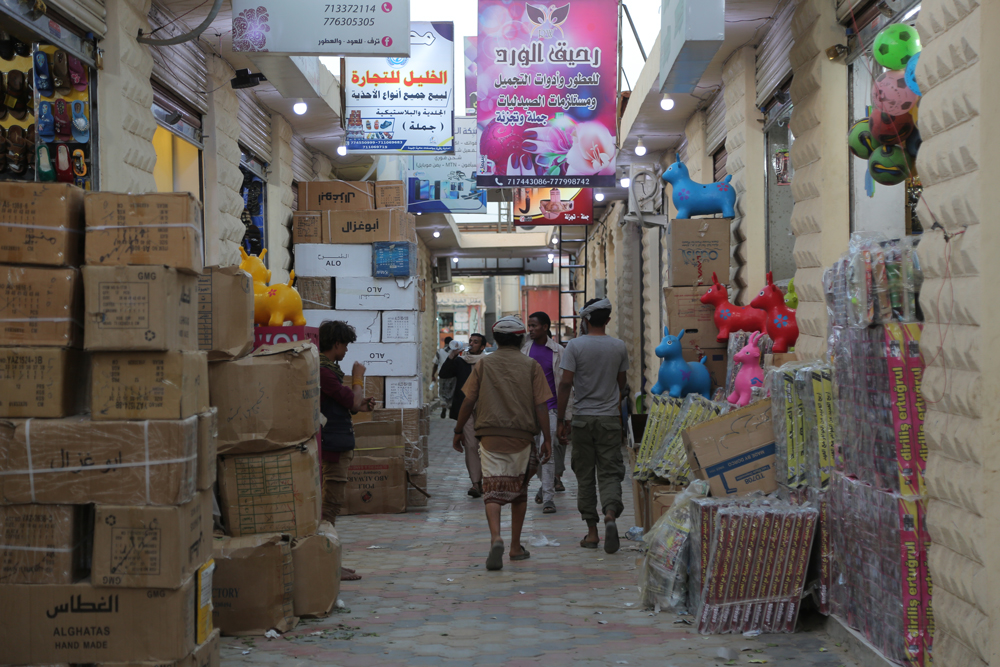
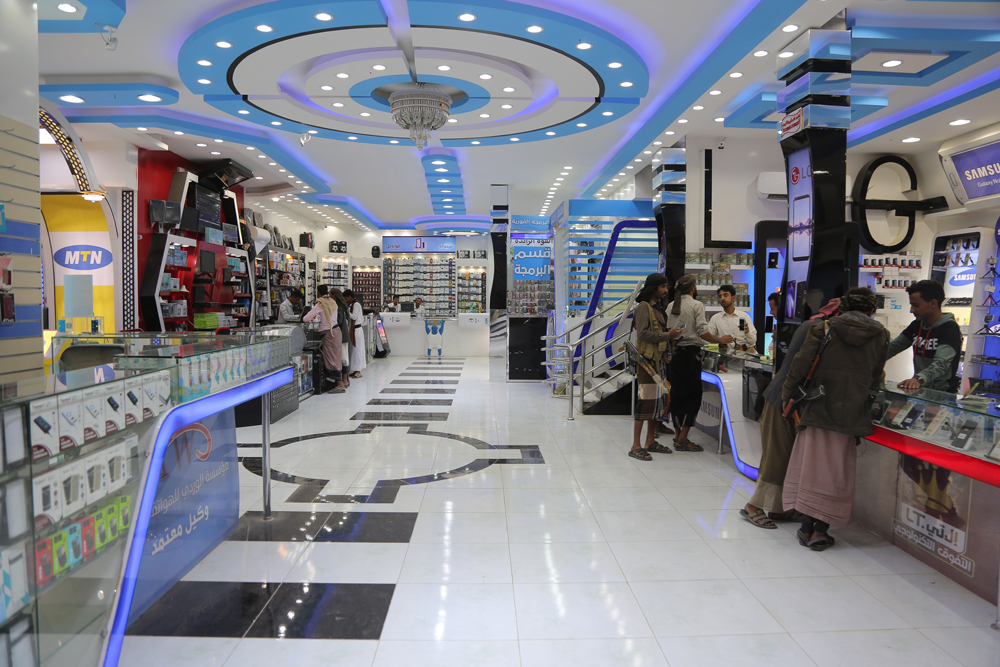
Outskirts dotted with refugee tents
The shortages in infrastructure and public services are even more apparent outside of the city. At the foot of the mountains, dozens of sprawling, makeshift camps host thousands of internally displaced people (IDPs). Due to the lack of humanitarian supplies, many families have pitched their own tents. However, this only solves one problem. Most IDPs also have very limited access to food, clean water, and healthcare.
Just outside the city, I met Saeed, a young boy who was filling potholes on the road leading to the Yemen-Saudi border. His first words to me were, “I am thirsty. Can you give me some water?” Saeed fled with his family from Taiz after the Houthis besieged the city in 2015. After pitching a small tent, he began filling potholes to earn money to feed his family. Despite being confined to the desert, he and his four brothers “are used to life here” and “in Taiz, it would be worse.” He has never known a life without suffering.
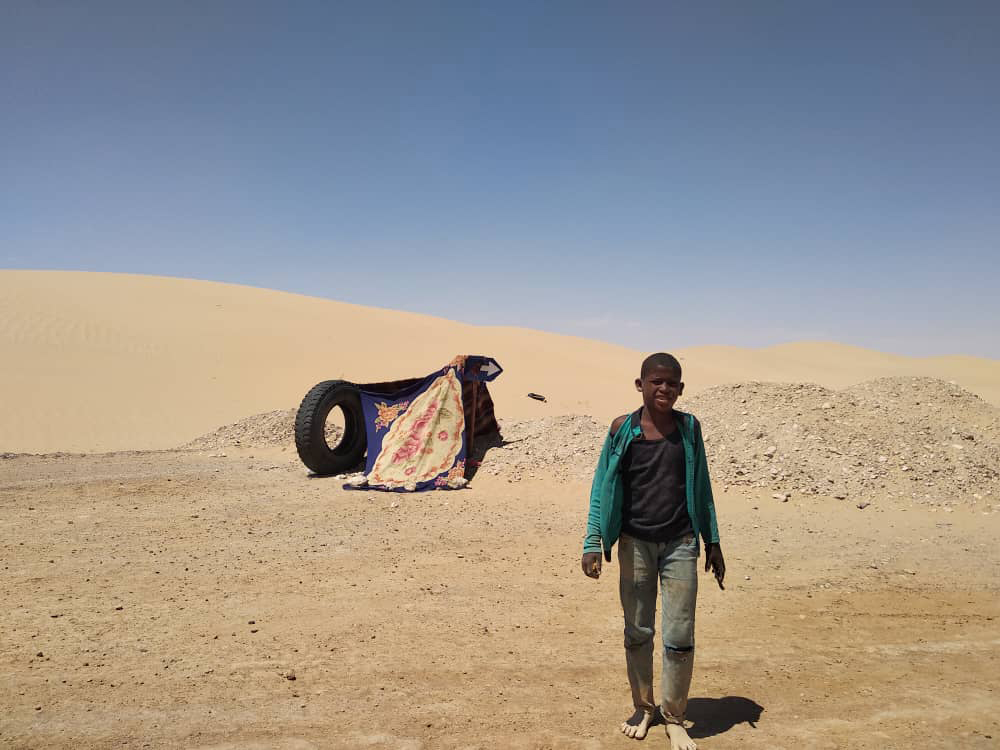
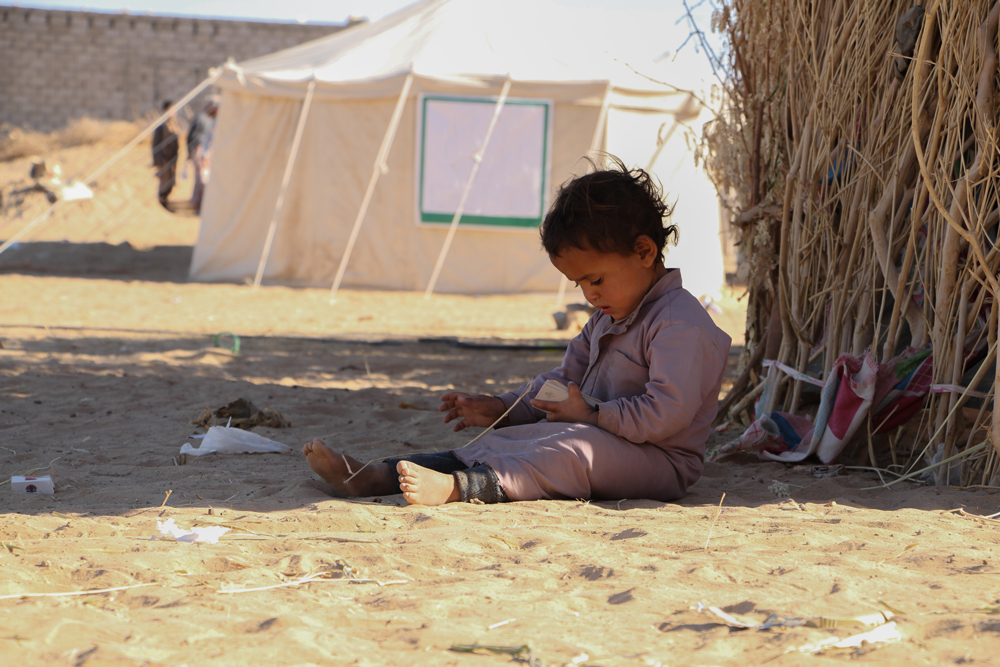
While many children in Marib are out of school for economic or other reasons, new schools have been built and existing schools have been expanded to absorb larger numbers of students. In November 2016, the University of Shaba Region was established as the first governmental university in Marib to offer higher education programs to the Marib community. It currently has 9,000 students enrolled, but with only three facilities, overcrowding is a major issue.
Tensions bubbling under the surface
Given the living conditions and diversity of the population, it is surprising that Marib has remained relatively stable internally – especially when one considers the hybrid governance model that has emerged. Multiple actors, including tribal leaders, political elites, military officers, and Saudi-UAE commanders, are managing to work together so far in Marib. In other areas of the country, there are deep rifts between these groups.Of course, there are points of friction and governing challenges that could easily change the dynamics. Some tribal leaders are dissatisfied with the performance of local authorities, and their opposition sometimes results in confrontations with security forces. Since my visit to Marib, skirmishes have taken place between tribesmen and soldiers at security checkpoints. Several incidents have transformed into massive armed clashes in Alashraf, an area in the western part of Marib Governorate.
The tribesmen usually accuse the local authorities of belonging to the Islah Party, considered a branch of the Muslim Brotherhood in Yemen. The authorities deny such accusations and point out that most of their leaders, including the governor of Marib, are members of the General People’s Congress, the political party of former president Ali Abdullah Saleh.
Ancient archaeological ruins neglected
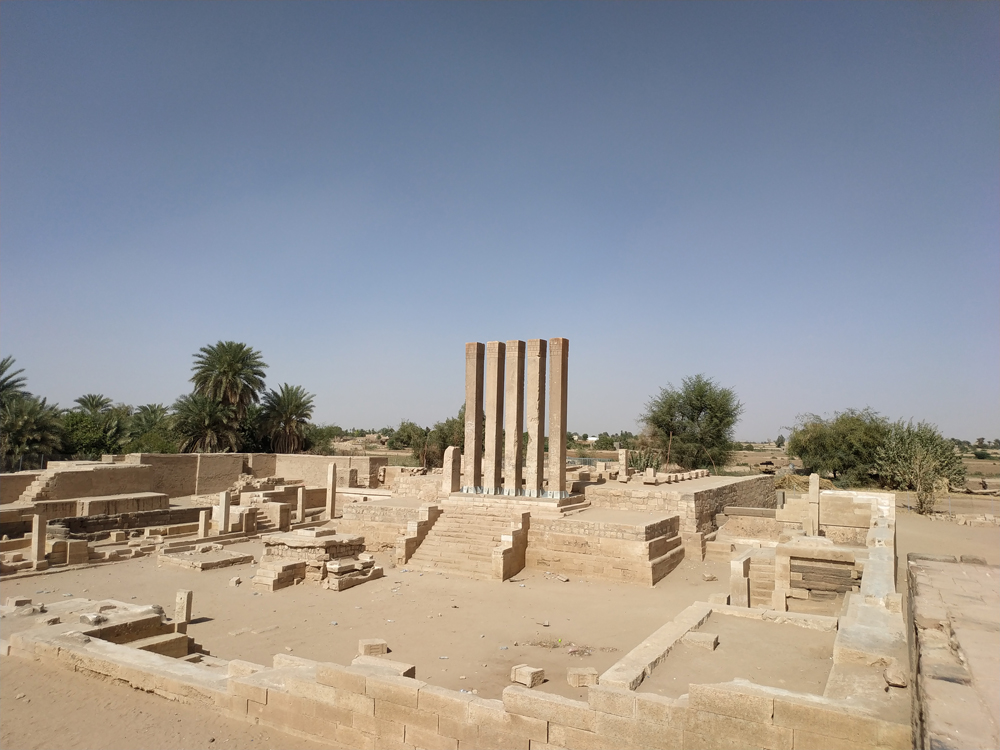
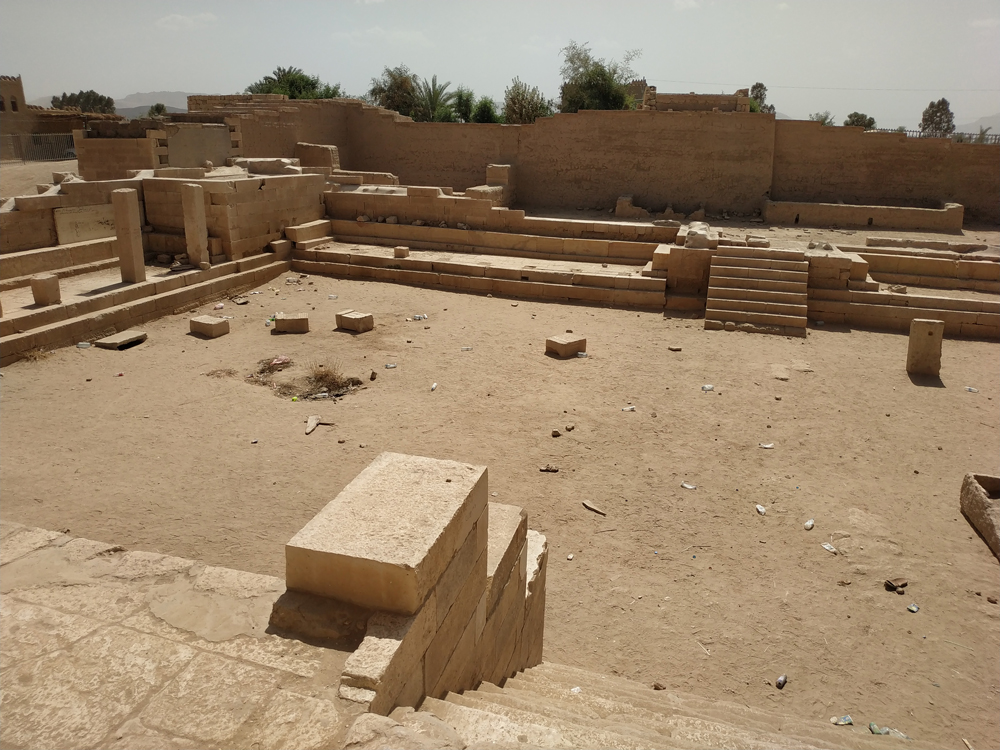
Despite its challenges, Marib is a relative success story
The lack of capacity to deal with the effects of the conflict is also evident by the thousands of vehicles without registration plates that move people and transport goods. Security authorities in Marib have found it difficult to track the unregistered cars, which, besides depriving the state of income, are often used in illegal activities such as smuggling and looting. During the last few months, bandit gangs have spread to the road linking Marib and Hadramout. Consequently, the number of crime victims continues to increase.
In the face of these and other immense challenges, how is Marib managing to move forward? Perhaps it is the common resilience of the people that sets the city apart. Even so, no one can anticipate whether Marib will remain a stable exception or turn into another example of failed governance. It is certainly a place to watch, with potential lessons for other parts of Yemen.
Ahmed Nagi
© Carnegie Endowment for International Peace 2019
Ahmed Nagi is a non-resident scholar at the Carnegie Middle East Center in Beirut, where his research focusses on Yemen.
